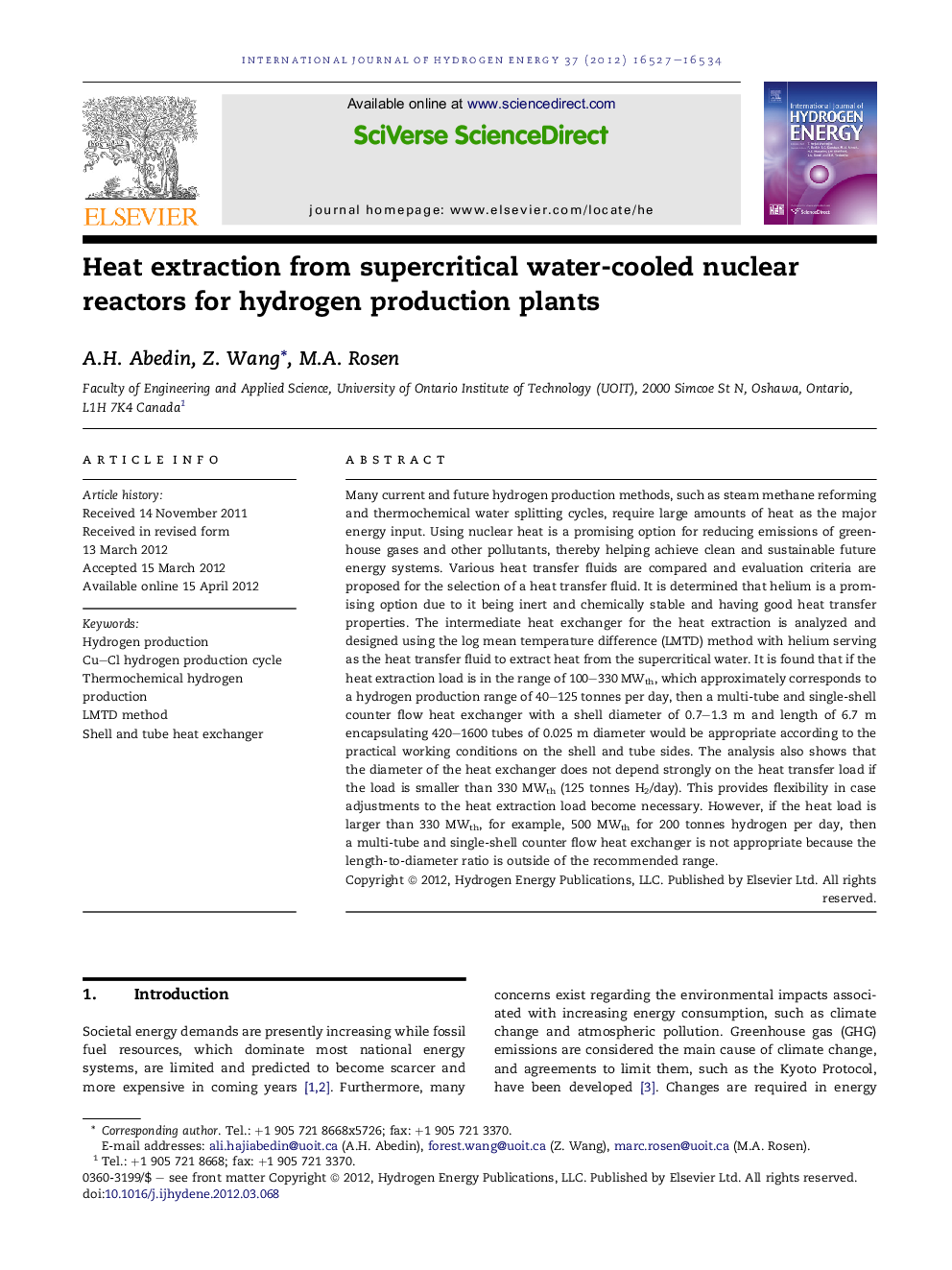| Article ID | Journal | Published Year | Pages | File Type |
|---|---|---|---|---|
| 1282185 | International Journal of Hydrogen Energy | 2012 | 8 Pages |
Many current and future hydrogen production methods, such as steam methane reforming and thermochemical water splitting cycles, require large amounts of heat as the major energy input. Using nuclear heat is a promising option for reducing emissions of greenhouse gases and other pollutants, thereby helping achieve clean and sustainable future energy systems. Various heat transfer fluids are compared and evaluation criteria are proposed for the selection of a heat transfer fluid. It is determined that helium is a promising option due to it being inert and chemically stable and having good heat transfer properties. The intermediate heat exchanger for the heat extraction is analyzed and designed using the log mean temperature difference (LMTD) method with helium serving as the heat transfer fluid to extract heat from the supercritical water. It is found that if the heat extraction load is in the range of 100–330 MWth, which approximately corresponds to a hydrogen production range of 40–125 tonnes per day, then a multi-tube and single-shell counter flow heat exchanger with a shell diameter of 0.7–1.3 m and length of 6.7 m encapsulating 420–1600 tubes of 0.025 m diameter would be appropriate according to the practical working conditions on the shell and tube sides. The analysis also shows that the diameter of the heat exchanger does not depend strongly on the heat transfer load if the load is smaller than 330 MWth (125 tonnes H2/day). This provides flexibility in case adjustments to the heat extraction load become necessary. However, if the heat load is larger than 330 MWth, for example, 500 MWth for 200 tonnes hydrogen per day, then a multi-tube and single-shell counter flow heat exchanger is not appropriate because the length-to-diameter ratio is outside of the recommended range.
